Started flying HG about 1975. Bought a reserve parachute for myself as soon as they became available. We sometimes asked each other, "Do you think it will actually work, and save your bacon?" The usual response then was "Well. it gives you something to do, instead of just screaming, if everything goes wrong." Now, we know for sure, a good 'chute can be your best friend. I'd like to share some of the basics for a HG reserve parachute, here.
All IMHO, of course, and YMMV.
I would recommend getting the largest parachute that fits in your harness. Still, even a smaller 'chute is better than nothing. If you find a better 'chute later, there will still be a market for your older 'chute. You may get lucky and find a decent 'chute on the "pre-owned" market, which is not necessarily a "used" parachute. You will want these features, as a minimum:
* Largest parachute that fits in your harness. Parachute landings are abrupt; the slower, the better.
Para-Swivel
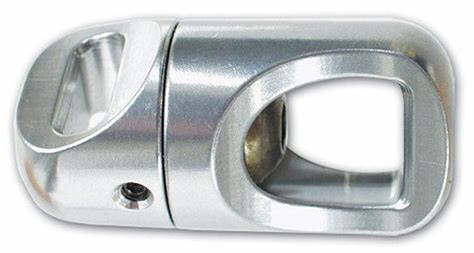
* Para-Swivel (a pivot point in the umbilical line). This ball-bearing gadget allows a broken, spinning glider to rotate without winding up the umbilical and the parachute suspension lines. Without this item, a spinning glider can rotate enough to twist the suspension lines together, closing the open canopy and causing a "streamer." As the lines are twisting together, the open canopy will resemble a small hot-air balloon, until the canopy has no air left in it. The Para-Swivel can be a lifesaver if the glider spins under canopy.
Tubular: DO NOT USE AS TUBULAR WEBBING AS AN UMBILICAL FOR THE RESERVE PARACHUTE!
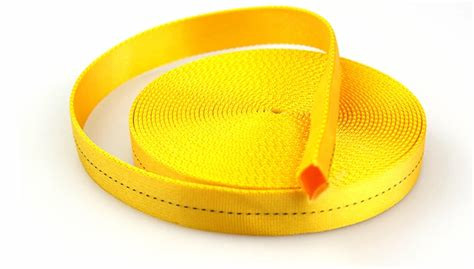
Tubular sleeve
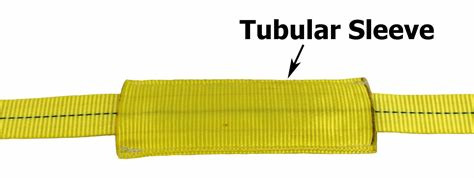
* Flat webbing umbilical strap. The umbilical strap connects the pilot to the canopy. Some older 'chutes have TUBULAR webbing for the umbilical strap, which is NOT safe for our uses. Tubular webbing can unravel like a scarf, once it is damaged or over-stressed by the opening shock loads. You want the umbilical strap to be solid, flat webbing, in the range of 4000 lb. to 10,000 lb. breaking strength. The only valid use for tubular straps for the reserve parachute is as a protective sleeve for the solid, flat webbing (the umbilical strap), to prevent sunlight damage to the umbilical. This protective sleeve is only used between the carabiner and deployment bag. If the sun can NOT shine on the umbilical, that will be good.
PDA (PULLED DOWN APEX) DESIGN.
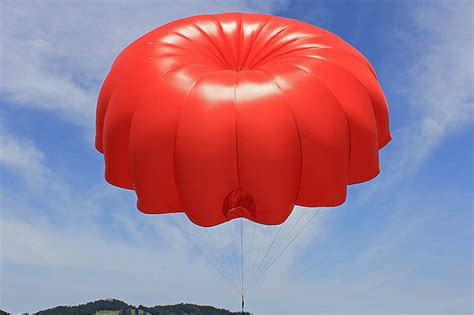
* PDA - Pulled Down Apex design has a separate line that runs from the center (apex) of the 'chute to the point where all support lines join together. This feature makes for a slower descent rate, so the parachute works as well as a larger conventional canopy will. Parachute landings are not fun, and the slower the descent rate, the better for you.
Vee-Tabs
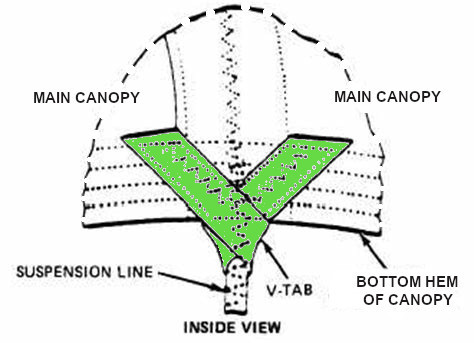
* VEE tabs. Each suspension line should attach to the canopy with a VEE tab, and at least 10" of the line sewn into the canopy. Some 'chutes run the suspension line all the way across the canopy, all crossing at the apex. This construction is the strongest, for parachute canopies.
* Deployment bags can be flat-opening, OR resembling a pillow case. My first parachute had a flat-opening bag (rather like a cloth diaper), which I prefer, but that may be a scarce offering these days. If the deployment bag is a sack, the deployment handle MUST be at the open end of the bag. If the deployment handle is at the closed end of the bag, a vigorous toss can throw just the bag, WITHOUT taking the parachute and lines out with the bag. A tangled 'chute can be the result, in a worst case. I thought this issue was settled decades ago, but I saw a parachute from a major manufacturer lately with the handle at the closed end of the bag. When I inquired, I had to EXPLAIN to the company why this was a bad setup. They told me the parachute was supposed to be deployed with TWO hands, and my concerns were then unfounded. Do NOT fall for this nonsense. If you have a broken glider on your hands, you will not have two hands free to deploy a 'chute. You will need a one-handed deployment bag on your parachute (meaning that the throwing handle is on the open end of the bag).
Happy landings.





